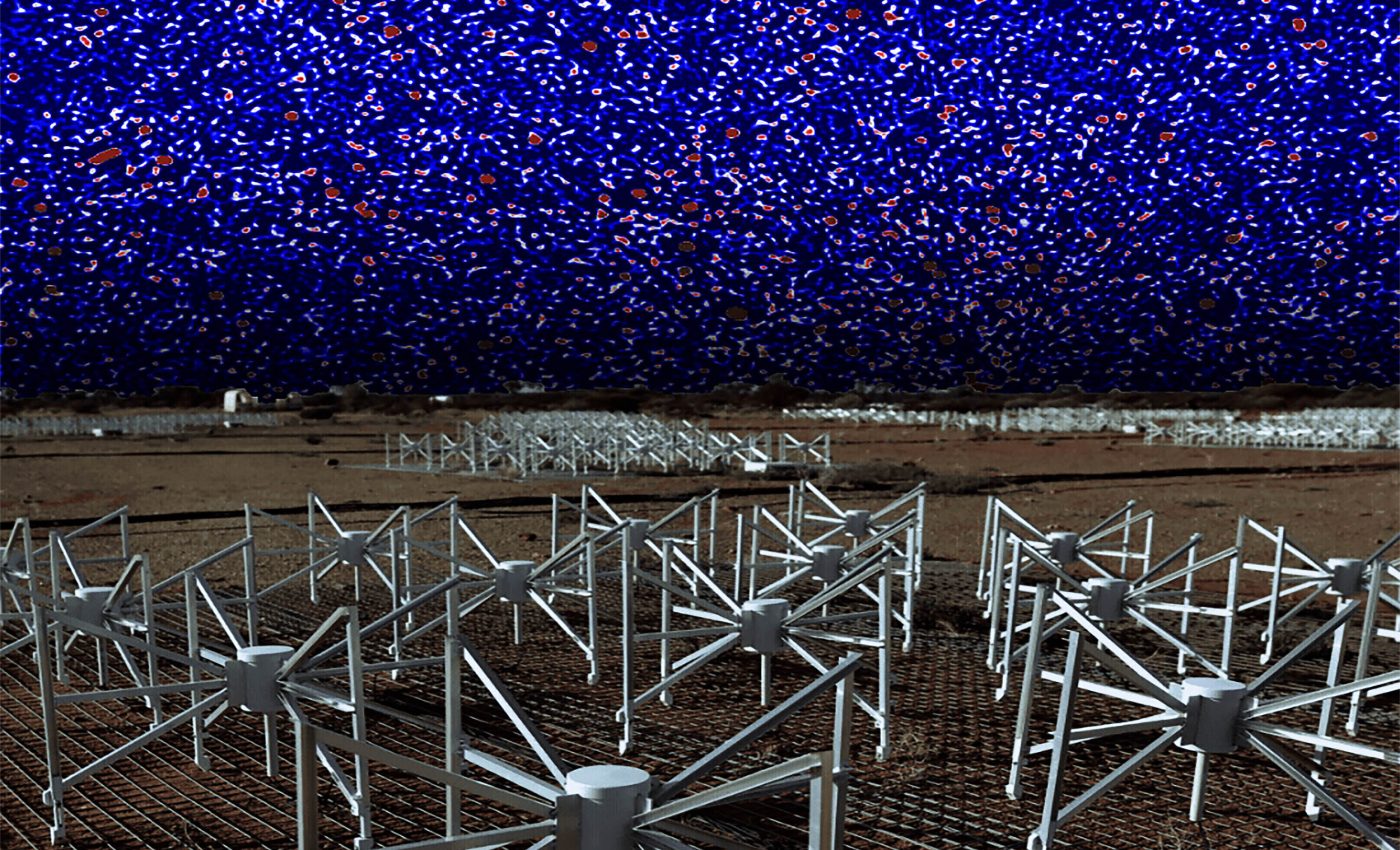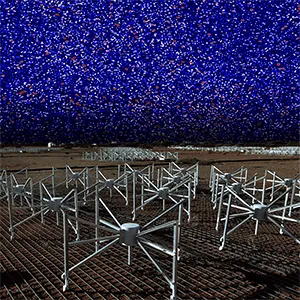
Before the stars were born, the early universe was already radiating heat
The results of a new study point to a universe that was already radiating heat before the great switch on, known as reionization. The study suggests that the first stars did not flicker on in an icy cosmos.
The team behind the Murchison Widefield Array (MWA) used a fresh way to read ultra-faint hydrogen signals and came up empty for the coldest scenarios, which is a significant finding.
Detecting heat the early universe
Lead author Cathryn M. Trott at the International Centre for Radio Astronomy Research (ICRAR) at Curtin University led the analysis that tightened these limits and reframed the thermal timeline.
The team focused on when and how the intergalactic gas heated up before bright sources carved ionized bubbles through space.
The period in question is the Epoch of Reionization, when radiation from young galaxies and black holes stripped electrons from neutral hydrogen.
This period followed Cosmic Dawn, the stretch after the Big Bang when the first stars formed and began to affect their surroundings.
Understanding the Epoch of Reionization
Think of the early universe as a foggy room filled with neutral hydrogen. After the Big Bang, the universe cooled enough (about 380,000 years in) for atoms to form, and light couldn’t travel far because that hydrogen soaked it up.
Hundreds of millions of years later, the first stars and galaxies switched on. Their intense ultraviolet light started knocking electrons off hydrogen atoms – “ionizing” them – and carved growing, overlapping bubbles of clear space.
This cleanup project, called the Epoch of Reionization, transformed the universe from opaque to transparent between roughly 400 million and 1 billion years after the Big Bang.
Finding the thermal footprint
Astronomers cannot watch this era directly with visible light because the signals are faint and spread thin. They turn to the 21-cm line, a radio signature from neutral hydrogen that shifts to low frequencies as the universe expands.
Tracking that line as a function of scale reveals how hot the gas was and how patchy the ionized regions became.
The thermal footprints link to the sources that did the heating, such as X-rays from stellar remnants or nascent black holes.

Looking to the power spectrum
The Murchison Widefield Array is a radio interferometer in Western Australia that blends signals from many simple antennas to act like one large telescope.
The MWA operates at low radio frequencies and has a wide field of view. Instead of producing traditional images, the data are distilled into a power spectrum – a tool that measures how the brightness of the 21-cm signal varies across different spatial scales.
In essence, it reveals the “texture” of hydrogen across the young universe. Early on, before stars and galaxies began to stir things up, theory predicts that these fluctuations would have been nearly Gaussian – random and smooth, without the complex patterns that later cosmic structures introduced.
Experts have found that a power spectrum is the most efficient way to track the variance of the signal. The challenge lies in everything that is not the signal.
The Milky Way and countless discrete radio sources produce strong foregrounds that swamp the cosmological whisper and can make the statistics non-Gaussian.
Heat detection in the early universe
Rather than forcing one estimator onto all data, the team measured the distribution of their visibility samples and fit only the Gaussian core.
The researchers carefully compared independent polarizations and the real and imaginary data components for consistency.
Agreement across those checks supports the idea that the method is isolating the same underlying sky signal in different ways.
To guard against bias, they also ran realistic simulations of the sky and the instrument. The mock data revealed that foreground leakage can create long-tailed distributions, while a pure 21-cm field remains close to Gaussian at these sensitivities.
This is not a detection of heat, and the researchers make that clear. Instead, it’s a more precise statement about what the signal cannot look like if the early universe were significantly colder.
What created heat in the early universe?
The team’s results rule out the coldest reionization scenarios, which would have produced a stronger contrast between cold and heated regions.
The absence of that stronger contrast means the intergalactic medium was already heated before widespread ionization.
“As the Universe evolves, the gas between galaxies expands and cools, so we would expect it to be very, very cold. Our measurements show that it is at least heated by a certain amount,” said Professor Trott.
The results favor models with early X-ray sources. In other words, high mass X-ray binaries or accreting black holes may have been the first widespread heaters.
The research will be advanced by the upcoming Square Kilometre Array Low (SKA-Low). Its sensitivity and scale will allow not just upper limits but detailed maps and higher-order statistics.
For now, a consistent story is taking shape across independent arrays. The first stars and black holes lit up a universe that had already been warmed by earlier X-rays.
Sharper limits will test how early the heating began and how hard it ran. That, in turn, tells us about the first populations of compact objects and their spectra.
The study is published in The Astrophysical Journal.
—–
Like what you read? Subscribe to our newsletter for engaging articles, exclusive content, and the latest updates.
Check us out on EarthSnap, a free app brought to you by Eric Ralls and Earth.com.
—–













